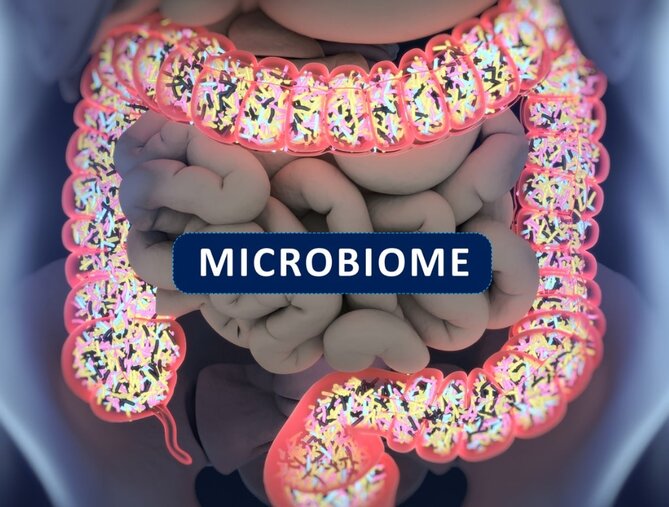What if the bugs in your gut had more to do with weight management and metabolism than the calories and composition of your food?
For decades we’ve been taught the mantra that calories were the key to managing weight. Eat more calories, gain weight, eat fewer calories, lose weight.
We were told we could have our cake and eat it too, we could eat our candy bar and have our 100-calorie pack of cookies or potato chips – all in the game of “everything in moderation”.
What were the results of this grand strategy for weight loss?
Americans are now more obese than ever before.
Over 70% of adults are overweight or obese – and higher percentages of both children and adults are drifting into dangerous metabolic profiles associated with cancer, cardiovascular disease, fatty liver, inflammation, and more.
The stats are appalling but certainly fixable!
Enter – the importance of a healthy gut microbiome.
A landmark study in the journal Science looked at the role of the microbiome on weight gain (1).
- The authors took identical twin mice that differed in weight. They shared 100% of the same genetics – yet one group of twins was overweight and the other group was lean.
- They then raised a separate set of twin mice – but this group developed without a gut microbiome (“a germ-free microbiome”).
- They split the microbiome-free treatment mice into two groups. The microbiome from the overweight mice was transplanted into the first group of twins and the microbiome of the lean twins was transplanted into the second group.
- They then gave the two groups of mice with new microbiomes from obese or lean mice the exact same diets and followed their metabolic outcomes over time.
Landmark Study Findings on the Microbiome and Weight Management
The journal Science is one of the most prestigious in the world and they only tend to publish results that yield profound implications.
As one might expect from Science, this trial did not disappoint.
- Over time the twins with the overweight microbiome would gain weight, the twins with the lean microbiome would stay lean despite the SAME diet amount and composition.
- They then switched the results! They gave the two groups of treated mice heavy antibiotics to kill off the microbiome and then transplanted the opposite microbiome.Following the microbiome switch, the overweight mice became lean and the lean mice became overweight despite following the same diets!
- The only treatment difference across the findings was the microbiome composition – the mice were identical twins and fed the exact same diets.
The only difference was if they were transplanted with the microbiomes from overweight or lean mice.
They also mixed the lean and overweight microbiome mice in the same cages – and, they started to mirror the other in weight.
This was because of fecal contamination of their food source from being in the same cage (normal for mice but not for humans).
In humans, we see a sharing of diet and health habits among those in close quarters – and so similar principles apply.
The Major Characteristics of a Healthy Functioning Gut
If a “healthy microbiome” is the goal, what does that look like?
- High diversity of the microbiome
- High levels of Akkermansia muciniphila, F. prausznitzii, and Bifidobacteria
- High product of Short Chain Fatty Acids (SCFA’s) and other metabolites – produced by bacteria – yet also promote good bacteria
- Low production of primary and secondary bile salts through regular bowel elimination and healthy bile production and flow, as well as intake of healthy fats
While many of us could use a more complete dietary overhaul – some simple changes can make a huge difference in the quality of your microbiome over a 3-month time period.
Every 2-3 months (and sooner), your microbiome quality and diversity will reflect the exposures, diet, stress levels, exercise and more, over that time period.
You can also measure incredible insights from personalized microbiome analysis – giving you a benchmark on the health of your microbiome – but also giving you and your functional provider a blueprint on how to fix it.
Of course, you can then repeat the test and see where work still needs to be done! While you may wish to seek professional guidance on your results, a BiomeFx testing kit can be purchased on your own.
Equipped with the motivation from the Science article above, the benchmark of personalized microbiome analysis, all that’s left is a plan! I’ve put together a plan template for you with the 7 Core Strategies to Heal the Gut Lining and Manage Leaky Gut Naturally.
I’ve put together a plan template for you with the 7 Core Strategies to Heal the Gut Lining and Manage Leaky Gut Naturally.
Related Content:
- Short Chain Fatty Acids – Benefits for Gut Health, Immunity and Beyond
- Metabolic Secrets – Tremendous Benefits of Intermittent Fasting for Gut Health
- The Ultimate Megaspore Resource Guide
- Polyphenols – The Next Generation of Prebiotics
- The Many Benefits of Bifidobacteria
- The Domino Effect of Stomach Acid on Digestion and the Gut Microbiome
- How to Improve the Balance of Friendly Microbes in the Mouth and Why a Healthy Oral Microbiome is Essential for Gut Health, Inflammation, and Whole Body Wellness





